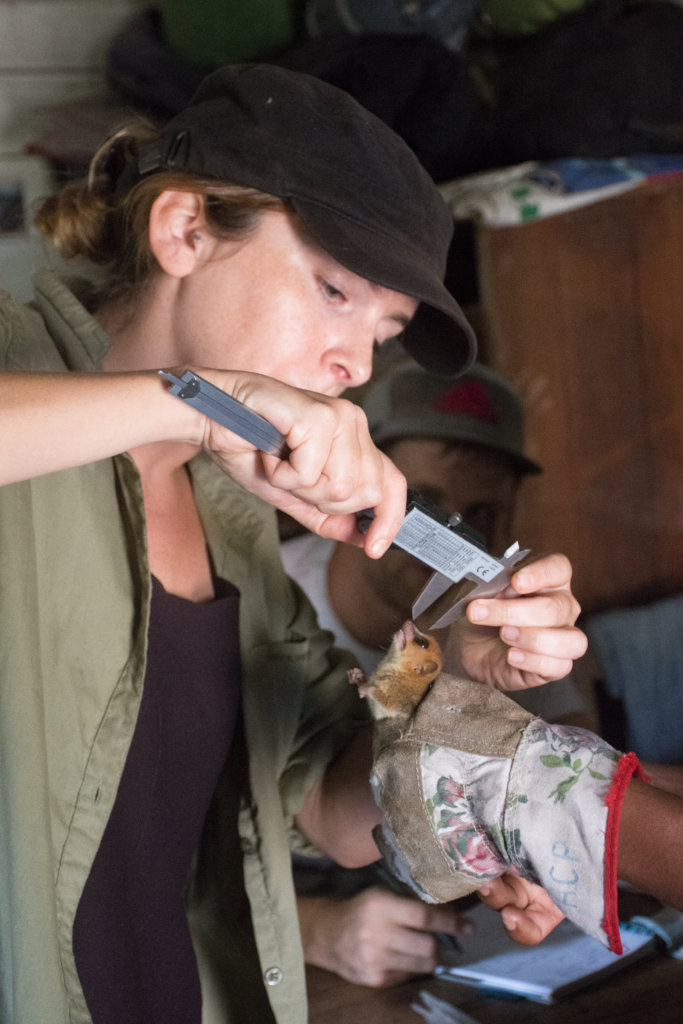By Georgie Vanner | Project Development Officer
Over the the last three months, SEED Madagascar’s conservation research team have been working hard to catch five more mouse lemurs, three of which have been fitted with miniature radio tracking collars that weigh just three grams. Two of the mouse lemurs were still too small to have collars put on them, which cannot be more than 5% of the animal’s body weight. Up to date, eight mouse lemurs have now been collared. When we catch the mouse lemurs, lots of biological measurements are taken. These include sex, estimated age, weight, length and eye diameter. After the radio collars are fitted and measurements taken, we then safely release the mouse lemurs back into the forest.
The collars allow the researchers to follow the elusive, nocturnal mouse lemurs through the forest, track their movements and figure out where they sleep, eat and breed. Sam Roberts, SEED’s Executive Director of Conservation Research, has been out in the forest with expert Malagasy guides, on night-long transects to follow the tiny lemurs. This collected data helps SEED to estimate the population and distribution of the lemurs and therefore highlight which areas of the forest to prioritise protection. Data will continue to be collected to make a comprehensive final assessment on the population, distribution, ecology and habitat preference of the new mouse lemur species!
The genetic samples have been exported from Madagascar and are on their way to the Primate Genetics Laboratory, German Primate Centre in Göttingen, Germany to be genetically analysed and confirmed as a new species. Hopefully the results will be confirmed in time for an IUCN meeting in Antananarivo in April 2018 with the International Specialist Group for Lemurs, to announce the project findings and the discovery of a new species!
SEED sees youth education as a crucial part of successful and sustainable conservation work. Therefore, whilst SEED have been waiting for the exciting confirmation of the new mouse lemur species, the conservation team have focused some of the lessons in the free local Conservation Club on the mouse lemurs of Sainte Luce. The sessions included the appearance, ecology, habitat and threats faced by mouse lemurs. The conservation team also taught about the importance of connecting areas of forest together, to help mouse lemurs move easily through forest habitat and therefore reduce their extinction risk. The children had great fun doing a mouse lemur drawing competition, and showed they could recognise the new species.
By Georgie Vanner | Project Development Intern
By Allison Burtenshaw-deVries | Head of Project Development
Project reports on GlobalGiving are posted directly to globalgiving.org by Project Leaders as they are completed, generally every 3-4 months. To protect the integrity of these documents, GlobalGiving does not alter them; therefore you may find some language or formatting issues.
If you donate to this project or have donated to this project, you can receive an email when this project posts a report. You can also subscribe for reports without donating.
